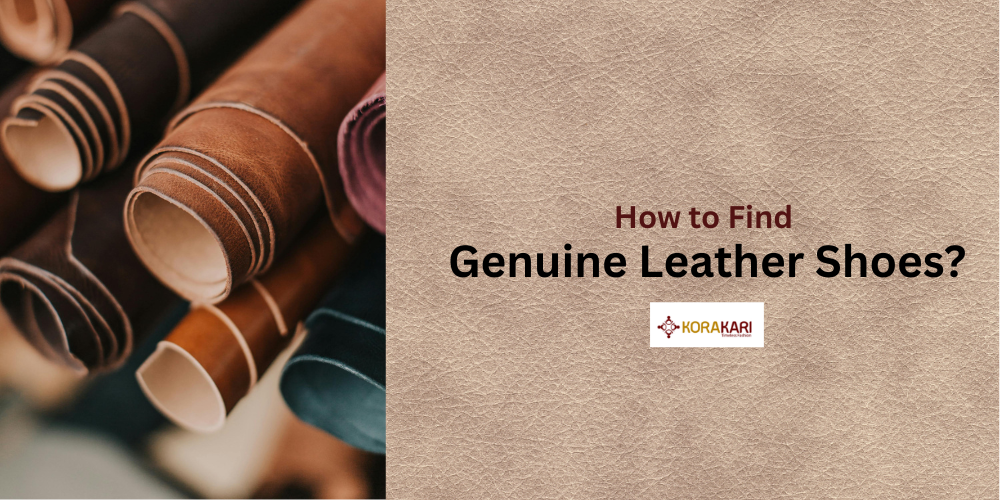Finding genuine leather shoes can be a daunting task, especially with the plethora of synthetic alternatives flooding the market. Genuine leather shoes are known for their durability, comfort, and timeless style. This guide will help you identify authentic leather shoes, ensuring you invest in quality footwear that will stand the test of time.
1. Understanding Leather Types
Before diving into the identification process, it's essential to understand the different types of leather used in shoes:
Full-Grain Leather: The highest quality leather, known for its durability and natural look.
Top-Grain Leather: Slightly lower in quality than full-grain, but still excellent and more affordable.
Genuine Leather: A term that often confuses buyers; it refers to leather that is of lower quality than full-grain and top-grain but is still real leather.
Bonded Leather: Made from scraps of leather bonded together; it's the lowest quality and least durable.
2. The Look and Feel
Genuine leather has a distinct look and feel that sets it apart from synthetic materials. Here’s what to check:
Texture: Genuine leather has an uneven, natural texture. If it looks too perfect, it might be synthetic.
Smell: Real leather has a unique, rich smell. Synthetic leather often smells like plastic or chemicals.
Pores: Leather has natural pores. Look closely for tiny imperfections, which indicate authenticity.
3. The Water Test
A simple way to test if the leather is genuine is the water test. Place a small drop of water on the shoe. Genuine leather will absorb the water slowly, while synthetic materials will not absorb it at all.
4. Flexibility and Softness
Genuine leather is flexible and soft. When you bend the shoe, it should show small wrinkles. Synthetic leather, on the other hand, is often rigid and cracks when bent.
5. Price Point
While price alone isn't a definitive indicator, genuine leather shoes are generally more expensive than their synthetic counterparts due to the cost of materials and craftsmanship involved in making them.
6. Brand Reputation
Buying from reputable brands can increase the likelihood of getting genuine leather shoes. Established brands are less likely to compromise on quality.
7. Labels and Certifications
Look for labels that specify the type of leather. Certifications from leather associations can also indicate authenticity.
8. Detailed Examination
Inspect the edges of the shoes. Genuine leather often has a rough, natural edge, whereas synthetic leather edges are smooth and even. Additionally, check the stitching; high-quality leather shoes will have tight, consistent stitching.
9. Professional Advice
When in doubt, seek professional advice. Leather experts or cobblers can often identify genuine leather with a quick inspection.
10. Long-Term Wear
Genuine leather shoes improve with age. They develop a patina, becoming more attractive and comfortable over time. If a pair of shoes deteriorates quickly, they are likely not made of genuine leather.
FAQs
1. What are the benefits of genuine leather shoes?
Genuine leather shoes are durable, comfortable, and develop a unique patina over time. They also allow your feet to breathe better than synthetic materials.
2. How can I maintain my leather shoes?
Regular cleaning, conditioning, and proper storage are essential to maintain leather shoes. Use leather-specific products for cleaning and conditioning.
3. Can synthetic leather be as good as genuine leather?
While high-quality synthetic leather can mimic the look of genuine leather, it generally lacks the durability, breathability, and comfort of real leather.
4. Why are genuine leather shoes more expensive?
The cost of materials and the craftsmanship involved in making genuine leather shoes contribute to their higher price.
5. What should I do if I'm unsure about the leather quality?
If you're unsure, seek advice from a professional or purchase from a reputable brand that guarantees the authenticity of their products.
Conclusion
Finding genuine leather shoes requires a keen eye and some basic knowledge about leather. By understanding the characteristics of real leather and following the tips outlined in this guide, you can make an informed decision and invest in quality footwear that will serve you well for years to come.
Share this guide with friends and family to help them find the best leather shoes as well!




Leave a comment
This site is protected by hCaptcha and the hCaptcha Privacy Policy and Terms of Service apply.